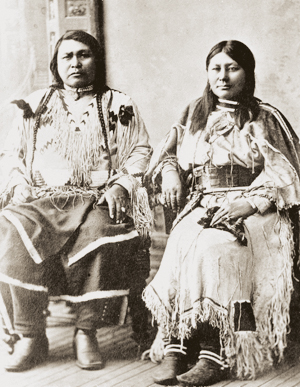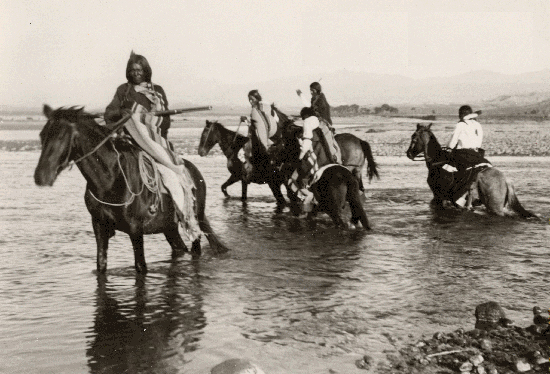“People of the Shining Mountains”
Story by Steven G. Baker.
Photography, ©Ute Museum, all rights reserved.
All content © San Juan Publishing Group, Inc, All rights reserved.

[SW Colorado] Eons before lthe gold rush of the 1870s, Colorado’s western slope was home to the Ute Indians, with the valley of the Uncompahgre River being the traditional homeland of the Uncompahgre Band. (Uncompahgre is the Ute word for warm, flowing water.) Spanish descriptions from the 1760s feature Ute legends about their ancestors, who had an ancient spiritual relationship with Ouray’s copious hot springs. Here the Utes cleansed and healed themselves, offering gifts to the waters to appease the mythical “water babies.” As recently as the late nineteenth century, Chief Ouray, the most famous of all Utes, built a small adobe home at hot springs where the Wiesbaden Spa in Ouray is now located.
Traditionally, Uncompahgre Ute family groups stayed close to the valley, and lived in stick houses called “wickiups.” They wintered in the sunny canyons down-valley, and as spring turned into summer, followed ripening grass seeds and piñon nuts into higher elevations. By fall they would have been able to make the most of the mountains’ wild plants and game before retreating on foot to lower elevations once again.
Ute Indians

In 1881 the Utes became wards of the federal government and were forced from their homeland to the Unitah Valley Reservation in Utah (which gets its name from the Utes who were relocated there).
During the 1700s, the Utes acquired horses, an event which changed their culture and customs dramatically. Portable tepees became their homes. Warfare against other Indians was constant. New diseases reduced their numbers. Their traditional culture and political power withered, and they were unable to defend their lands from intruding settlers. In 1874, the Brunot Treaty was negotiated with Chief Ouray, and the mountains were opened to settlement by the whites. In 1881 the Utes became wards of the federal government and were forced from their homeland to Utah (which gets its name from the Utes who were relocated there).
There are few vestiges of the Uncompahgre Utes remaining on the landscape of Ouray County, but their presence may be felt at the hot springs they revered, and at Ouray’s Historical Museum where they are memorialized.
Photographs.
Bottom: Utes leaving Colorado for reservation n Utah, 1881.
Top: Chief Ouray and Chipeta
Both courtesy Ute Museum, Montrose, Colorado. All rights reserved.
Special Note:
The Siver Stage is honored to have had all seven of our stories featuring Ute history and culture selected for inclusion on the official web site of the
Ute Mountain Ute. Click on Culture & History and scroll down to Ute History Articles.
References & Additional Links
Ute Indian Official Web site
Ute People – Wikipedia
Ute Indians (“Niciu, The People”) Utah History to Go
Southern Ute Tribe web site
Ute Mountain Ute Tribe web site
Ute culture, history, folkelore & discussion board
